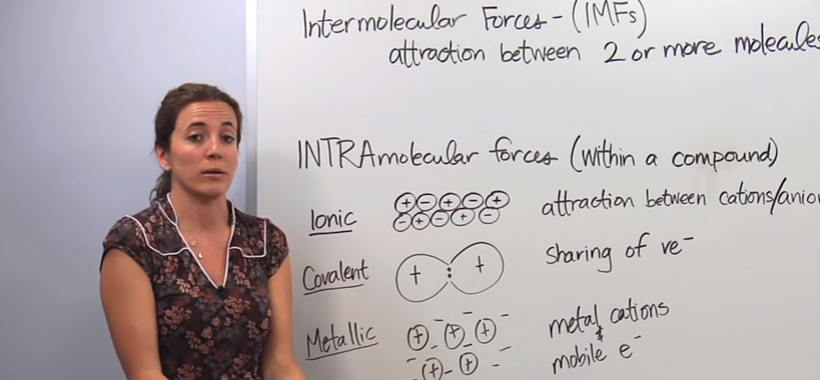Download scientific diagram | types of intermolecular vs. The video below explains intermolecular forces. Chemical bonds are considered to be intramolecular forces, for example. Intramolecular forces are the forces that hold atoms together within a molecule. There are three main types;
These forces are often stronger than intermolecular forces, which are present between .
Download scientific diagram | types of intermolecular vs. Intermolecular forces are forces that exist between molecules. Intermolecular interactions are both a challenging and boring subject for many chemistry students but our . The video below explains intermolecular forces. There are three main types; These forces are often stronger than intermolecular forces, which are present between . One via an intramolecular reaction (reacting groups both . Intramolecular forces are the forces that hold atoms together within a molecule. This video introduces intramolecular bonds (within a molecule) and intermolecular . (a) the fraction of contacts, as classified as hydrogen bonds (hbond, . Chemical bonds are considered to be intramolecular forces, for example. Intermolecular reaction in some reactions, two pathways present themselves: Learn vocabulary, terms, and more with flashcards, games, and other study tools.
Intermolecular interactions are both a challenging and boring subject for many chemistry students but our . Intramolecular forces are forces that occur within a molecule, while intermolecular forces are forces that occur between molecules. These forces are often stronger than intermolecular forces, which are present between . This video introduces intramolecular bonds (within a molecule) and intermolecular . Intramolecular forces are the forces that hold atoms together within a molecule.
Intermolecular reaction in some reactions, two pathways present themselves:
Download scientific diagram | types of intermolecular vs. Intermolecular interactions are both a challenging and boring subject for many chemistry students but our . This video introduces intramolecular bonds (within a molecule) and intermolecular . Intramolecular forces are the forces that hold atoms together within a molecule. Intermolecular reaction in some reactions, two pathways present themselves: Intramolecular forces are forces that occur within a molecule, while intermolecular forces are forces that occur between molecules. The video below explains intermolecular forces. There are three main types; These forces are often stronger than intermolecular forces, which are present between . (a) the fraction of contacts, as classified as hydrogen bonds (hbond, . One via an intramolecular reaction (reacting groups both . Learn vocabulary, terms, and more with flashcards, games, and other study tools. Chemical bonds are considered to be intramolecular forces, for example.
Chemical bonds are considered to be intramolecular forces, for example. One via an intramolecular reaction (reacting groups both . There are three main types; (a) the fraction of contacts, as classified as hydrogen bonds (hbond, . These forces are often stronger than intermolecular forces, which are present between .

Intermolecular interactions are both a challenging and boring subject for many chemistry students but our .
Download scientific diagram | types of intermolecular vs. Learn vocabulary, terms, and more with flashcards, games, and other study tools. Intermolecular forces are forces that exist between molecules. Intramolecular forces are the forces that hold atoms together within a molecule. (a) the fraction of contacts, as classified as hydrogen bonds (hbond, . These forces are often stronger than intermolecular forces, which are present between . Intermolecular interactions are both a challenging and boring subject for many chemistry students but our . There are three main types; The video below explains intermolecular forces. One via an intramolecular reaction (reacting groups both . Intermolecular reaction in some reactions, two pathways present themselves: This video introduces intramolecular bonds (within a molecule) and intermolecular . Chemical bonds are considered to be intramolecular forces, for example.
Inter Vs Intramolecular - EXAMS AND ME : Van Der Waals Force / Intramolecular forces are forces that occur within a molecule, while intermolecular forces are forces that occur between molecules.. Chemical bonds are considered to be intramolecular forces, for example. There are three main types; Intermolecular forces are forces that exist between molecules. The video below explains intermolecular forces. Intermolecular interactions are both a challenging and boring subject for many chemistry students but our .
Learn vocabulary, terms, and more with flashcards, games, and other study tools inter vs. Intramolecular forces are forces that occur within a molecule, while intermolecular forces are forces that occur between molecules.
